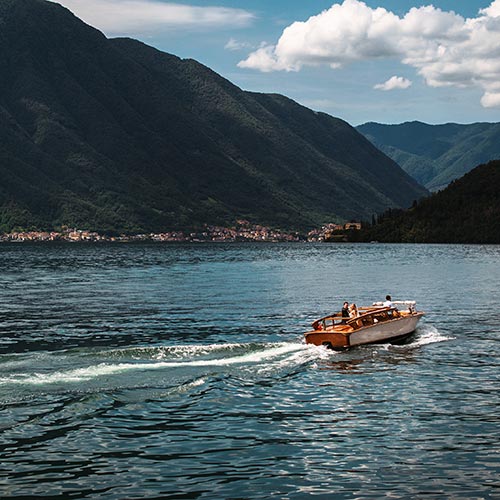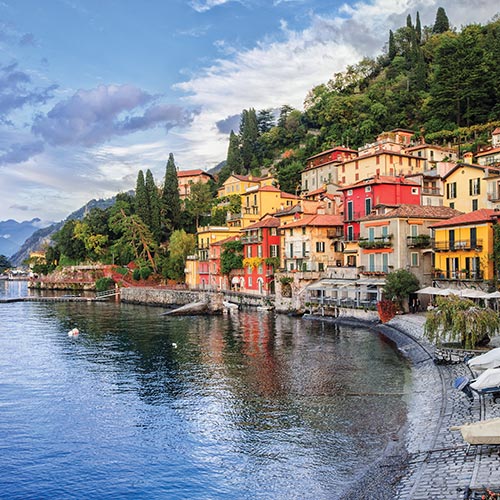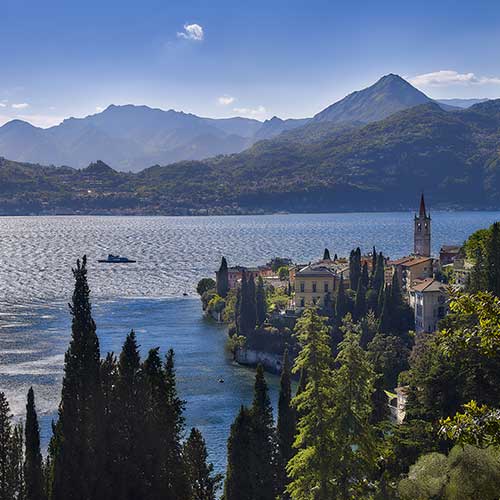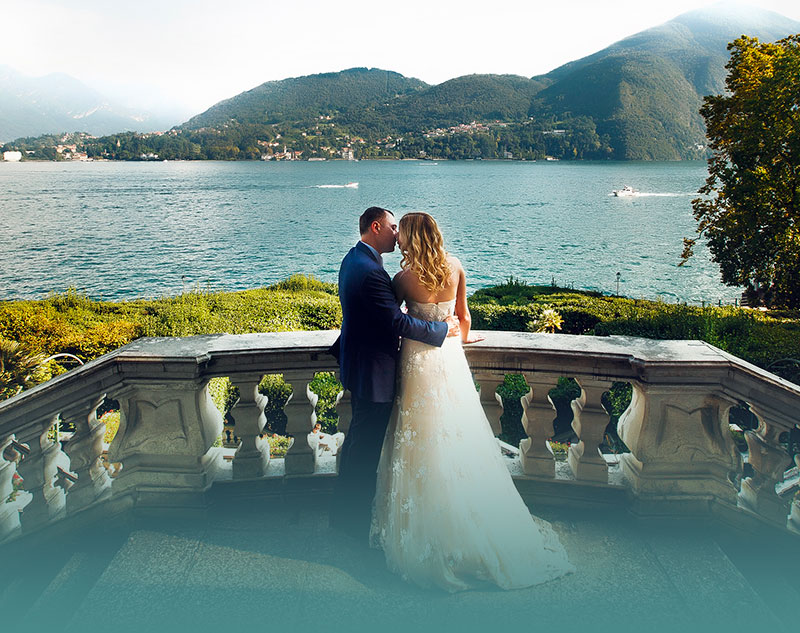Nominated as a fishing village in 769 it was allied in the time of the Municipalities in Milan, it was destroyed by the Como inhabitants in 1126. It welcomed the exiles from Comacina Island, which suffered similar fate in 1169: it was devastated, its castle and its churches destroyed . The neighborhood where they took refuge was called Insula nova, a name that was later extended to the entire village, which quickly became one of the richest in the lake.
Still today, the exodus of the Comacini and the welcome of the Varennese are celebrated every year on Saturdays and Sundays of the week in which falls on June 24, the feast of San Giovanni.
The lake is illuminated by day with thousands of lumaghitt, floating candles abandoned on the water, as if to remember the derelict souls who sailed from one bank to another, running away from their burning houses.
Passed as the Valsassina under the control of the Torriani, it came then not without contrast in the possession of the Visconti from the end of the thirteenth century. In 1480 he was given as a fief to Pietro II Dal Verme, count of Bobbio, Voghera, Castel San Giovanni and all the Tidone valley, Pieve di Incino and Valsassina, who died poisoned by his wife in 1485, and the fief together with the others of the Riviera was assigned to Chiara Sforza, daughter of Galeazzo Maria Sforza, widow Dal Verme. Despite frequent expropriations, Sforza was able to keep control of the situation until his death (1530), while his heirs Fregoso preferred to sell Varenna and the other fiefdoms to the Sfondrati in 1533. So until 1788 the city was an important part of the Sfondrati fief of the Riviera. .
Varenna fought Lierna militarily with Mandello for over 250 years, in 1375 Lierna became an integral part of Varenna, subsequently Lierna managed to put an end to the disputes obtaining its administrative independence in 1743.














